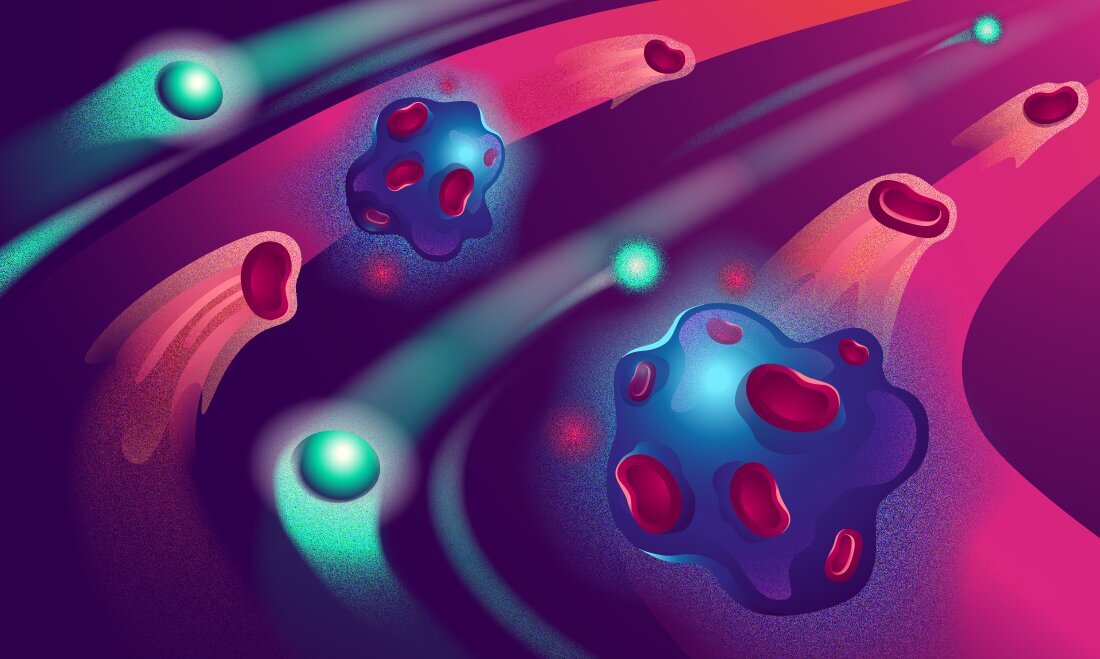Nanomedicine: The Frontier of Healthcare

From cancer treatments to vaccines, drug delivery to bone healing, nanomedicine has already established itself as a key tool in the medical profession’s arsenal.
And there’s no slowdown in the appetite for its use across a broad range of treatments and applications.
Explains the British Society for Nanomedicine: “Nanomedicine is simply the application of nanotechnologies in a healthcare setting.
“Today, nanomedicines are used globally to improve the treatments and lives of patients suffering from a range of disorders including ovarian and breast cancer, kidney disease, fungal infections, elevated cholesterol, menopausal symptoms, multiple sclerosis, chronic pain, asthma and emphysema.”
According to a recent report by BCC Research, the global market for nanomedicine should grow to USD493.5 billion by 2026 exhibiting a CAGR of 15.3%.
Continues the society: “The nanomedicines that are currently available are overcoming some of the difficulties experienced by normal medical approaches in delivering the benefit from the drug molecules used. Nanomedicines can play an important role in ensuring enough of the drug enters the body, that drug that does enter stays in the body for long periods and is targeted specifically to the areas that need treatment.
“Another important area of nanotechnology and nanomedicine is diagnostics. By studying and identifying individual molecules, it is possible to diagnose disease in time to improve the prognosis for the patient.
“Over the coming years, the benefits of nanomedicines and new diagnostic tools will be felt by an increasing number of patients with considerable impact on global health.”
So where are the key breakthroughs in medicine where nano is having the biggest impact?
As mentioned above, one is drug delivery systems. Imagine medications that act as guided missiles, precisely targeting diseased cells while sparing healthy ones.
Nanoparticles can be engineered to carry therapeutic agents and release them directly at the site of disease. This precision approach not only enhances the effectiveness of treatments but also reduces side effects; a game-changer in the world of pharmaceuticals.
This promises investors a more lucrative pharmaceutical market with higher demand for novel therapies.
Then there’s biosensors and the unravelling of the mysteries of disease detection.
Nanotechnology has given birth to highly sensitive and specific biosensors - tiny devices which can detect minuscule amounts of biomolecules, providing rapid and accurate diagnostic information.
From detecting infectious diseases to cancer markers, biosensors offer a swift and cost-effective means of disease identification. As the demand for early diagnosis and personalised medicine surges, investing in such technologies may yield substantial returns in both medical and consumer markets.
Regarding diagnostic capabilities, from magnetic resonance imaging (MRI) to computed tomography (CT), incorporating nanoparticles into these advanced imaging techniques now provides clearer, high-resolution images, enabling doctors to spot abnormalities with greater accuracy.
The overall result? The very real potential to transform public health on a global scale.
Faster and more accurate disease diagnosis and targeted therapies could lead to improved treatment outcomes and reduced healthcare costs. Furthermore, the early detection of diseases may prevent their spread and help control outbreaks.
Investors supporting nanomedicine research and development can contribute not only to better returns but also to creating a healthier and more productive society.
But is it all win-win?
While the potential is enormous and the medical profession’s acknowledgement of the power of the technology, it is not all plain sailing.
And key to that are regulatory hurdles – most notably at a government level.
In an article published by the legal sector’s International Bar Association, Cécile Théard-Jallu and Rozenn Carrio of the De Gaulle Fleurance Avocats Notaires in Paris, explained: “Medical applications of nanotechnologies are still underdeveloped globally, the major difficulty being the assessment of the nanomaterials to go through regulatory procedures with competent authorities.
“Despite some initiatives in France and the EU to establish a regulatory framework for the use of nanomaterials in the health sector, some uncertainties remain.”
At the heart of all the concerns is, of course, safety.
Any use of nanoparticles must be thoroughly tested for potential toxicity and side effects.
For example, polyphenols, bioactive compounds found abundantly in plants, fruits, and vegetables, have been identified to have anticancer, antioxidant, pro-oxidant, anti-angiogenic, and anti-metastatic activities.
While their therapeutic potential against cancer is extensive, challenges arise due to their low solubility and poor bioavailability, limiting absorption in the gastrointestinal (GI) tract. Nanotechnology, particularly nanoencapsulation, presents a promising solution to these challenges.
"Nanotechnology offers an unparalleled opportunity to elevate the therapeutic potential of naturally occurring agents like polyphenols, targeting cancer cells with a level of precision previously unachievable," says Paul Stannard, chairman of The World Nano Foundation. "However, the translation of these advancements to a regulated and safe clinical setting is crucial."
Moreover, ensuring equitable access to these cutting-edge treatments and technologies is crucial. Investors seduced by the promise should consider funding research that seeks to address these concerns, as responsible innovation will lead to sustained growth and long-term profitability.
Written by Chris Britcher





